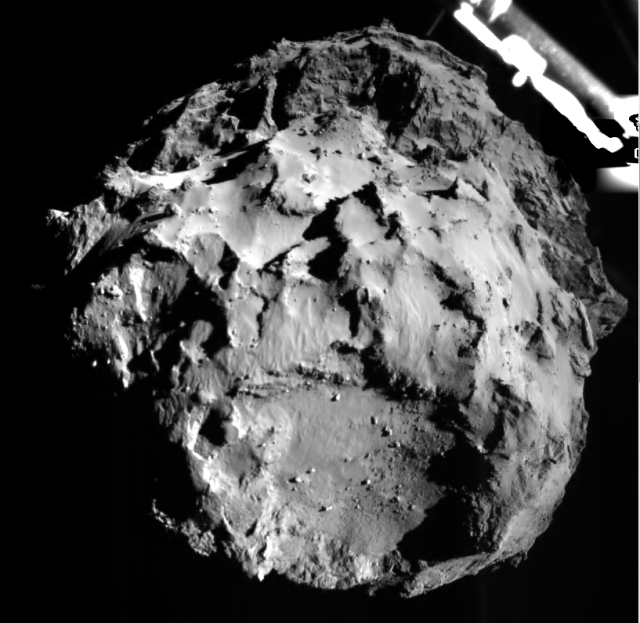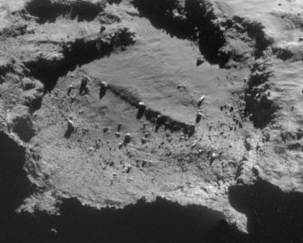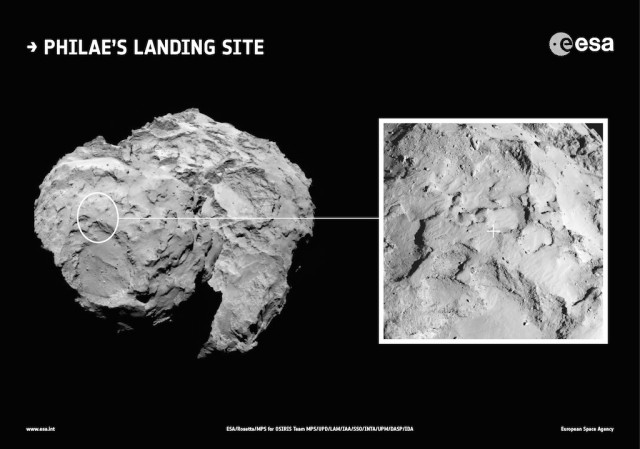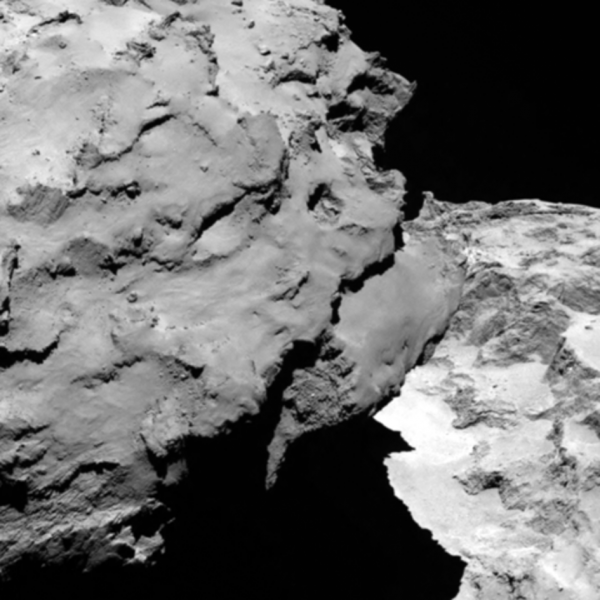Philae might have bounced
Data from the Philae lander suggests that, when the spacecraft’s harpoons failed to fire, the probe might have bounced and then settled to the surface.
[T]elemetry from the craft suggested it might have drifted off the surface after landing and started to turn. This subsequently came to an end, which the German Space Agency official interpreted as a possible “second landing” on Comet 67P. This “bounce” was always a possibility, but had been made more likely by the failure of the harpoons to deploy, and the failure of a thruster intended to push the robot into the surface.
Data from the Philae lander suggests that, when the spacecraft’s harpoons failed to fire, the probe might have bounced and then settled to the surface.
[T]elemetry from the craft suggested it might have drifted off the surface after landing and started to turn. This subsequently came to an end, which the German Space Agency official interpreted as a possible “second landing” on Comet 67P. This “bounce” was always a possibility, but had been made more likely by the failure of the harpoons to deploy, and the failure of a thruster intended to push the robot into the surface.









